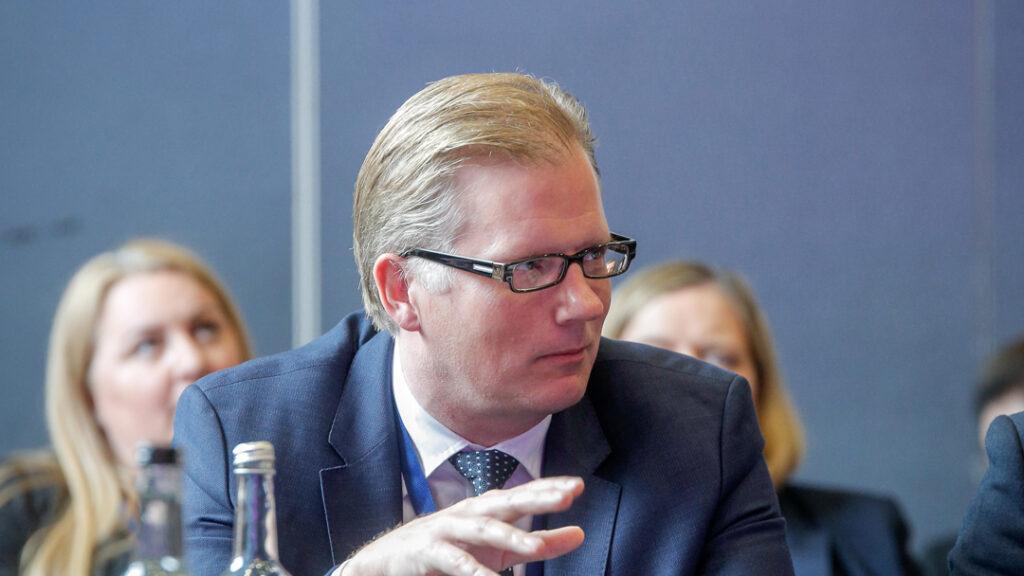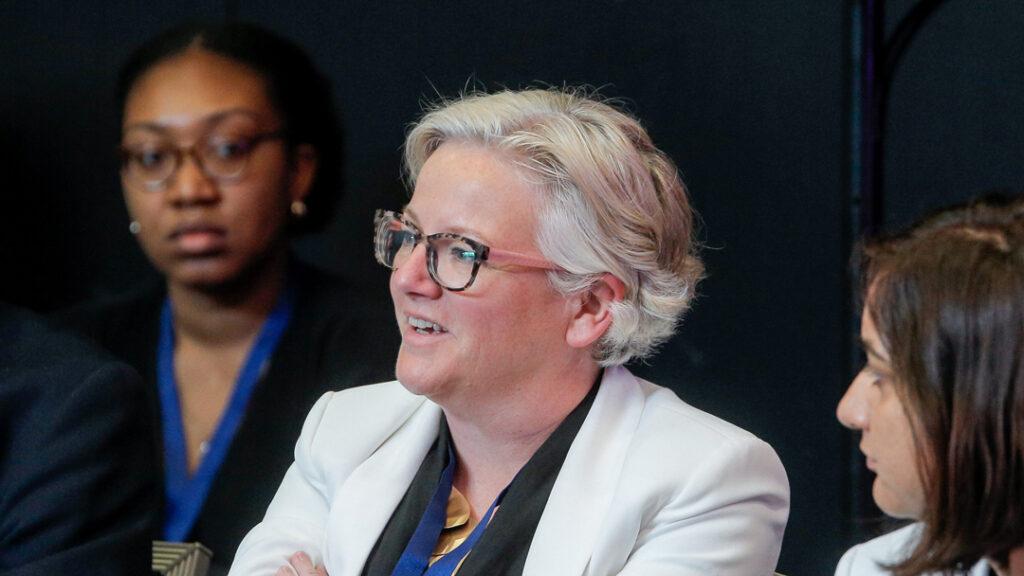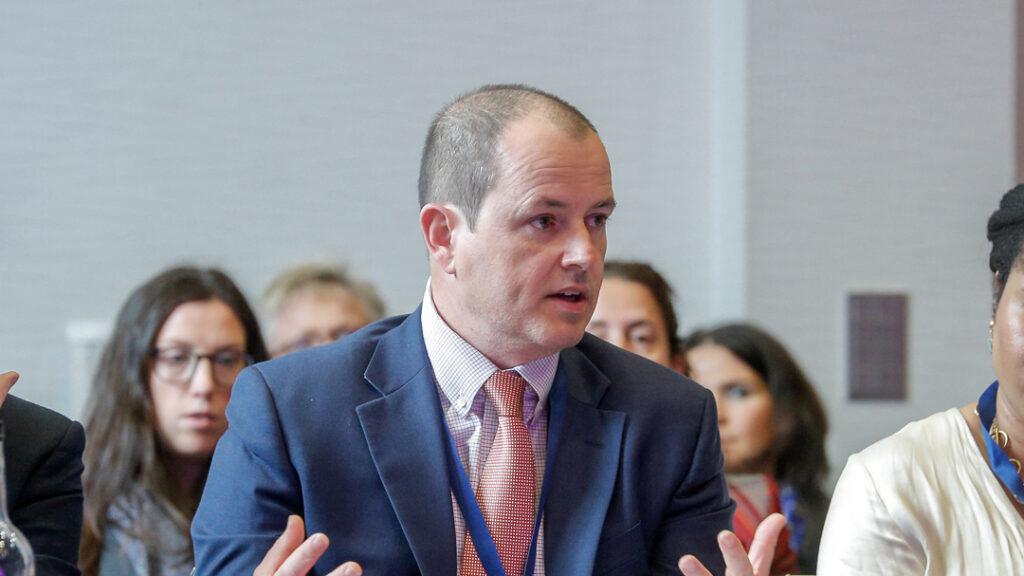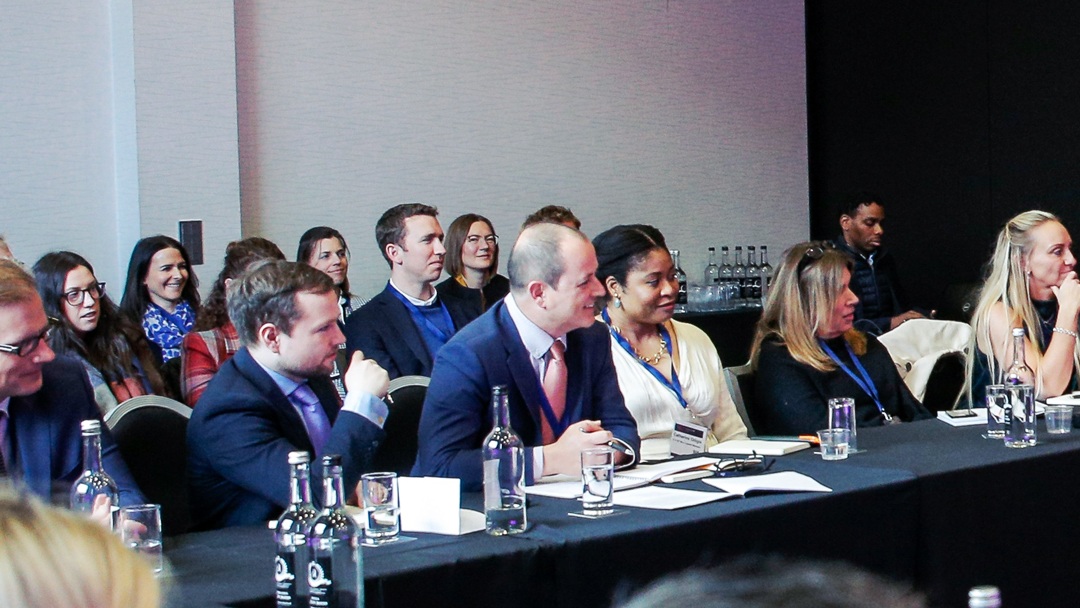The jewel in the crown of The Legal 500’s in-house focused events calendar, Enterprise GC, took place on 25 and 26 April at Syon House in West London. It saw elite UK general counsel and heads of legal come together to learn and engage with each other in a professional but light-hearted environment.
On day one of the retreat, The Legal 500 partnered with Thomson Reuters to examine where the in-house legal world might be headed, and what in-house legal teams might look like in 5-10 years’ time, as part of a wide-ranging panel discussion under the title of ‘In-house Legal Reimagined’.
James Byrne, solutions consulting manager at Thomson Reuters, kicked things off as moderator by referencing his organisation’s 2022 State of Corporate Law Departments report and invited the audience to share whether they agreed that there was a readiness for further transformation among them, a key finding of the report. The overall feeling in the room was that a huge transformation had already happened during the tumultuous period following March 2020; there is an appetite for even further progress, especially in the areas of sustainability and people management.

Another participant related that the pandemic had highlighted several unique legal challenges to them. Given their company’s operations, staff members were obliged to remain in the office during the worst of the pandemic. The business was forced to create a safe working environment to continue generating revenue, an endeavour that the legal department was intimately involved in. This had the added benefit of ensuring that the entire company was genuinely invested in ensuring health and safety and efficient office working conditions, which continued post-pandemic. The speaker was of the view that the lesson of the pandemic is that general counsel must now think more holistically about their work and the values of their organisation going forward.

The main takeaway in terms of technological adoption by in-house legal functions from the pandemic was undoubtedly the large-scale deployment of audio-visual conferencing software, which was used en masse over the pandemic and continues to be utilised regularly by everyone in attendance, despite the drawbacks compared to in-person meetings being highlighted. One GC railed against the often boring Microsoft Teams calls they were subjected to, while another echoed the views of many when pointing out that conferencing software leads to many in larger groups feeling left out, which is not ideal for a meeting. With that said, the technology provided certain benefits. One delegate waxed lyrical about the benefits of getting into the habit of reaching out to other business units regularly, something that started in the pandemic but continues today. Even teams geographically far apart can easily meet this way, effectively removing the silo effect that can often occur in larger organisations.
Adding value
Byrne then asked whether the wider transformations were being led by legal teams that were attempting to align themselves with the strategic focus of an organisation. There followed an interesting and informative conversation about the use of metrics to demonstrate the value of the legal department. Participants were split on how useful these can be to a legal department. Some saw the value of KPIs, while others were adamant that this could muddy the waters when getting across the value of a team. One participant felt that the effectiveness of KPIs is extremely operationally dependent. Since the start of Covid, their organisation had witnessed a large drop in demand, creating a governance challenge that had to be solved by the legal team. What they did was an immense benefit to the organisation, but something that was hard to quantify using hard statistics.
Most in attendance believed that there was no one-size-fits-all approach on this matter, but that statistics have their place in demonstrating value. One participant added that, at the end of the year, their team would produce a detailed list of what it had achieved, which had proven to be a significant help in getting across their value to business leaders, albeit much of the report made use of the less-quantitative medium of stakeholder feedback.
Another speaker echoed this mixed approach. In their estimation, pure lawyers are fundamentally different to businesspeople, and the best in-house teams must always remain partners to the business. The ideal general counsel should make the CEO consider them a trusted advisor who can not only help execute a business strategy, but also find a way to discuss the execution of the strategy within their own departments, a collaboration that would be far more useful for the organisation. An organisation that was unaware of the value of its legal team would not be operating to its maximum potential, which would amount to a failure on the part of the legal department. This, however, was a contested point. One lawyer in attendance felt that this was a privileged perspective, as any organisation with a large legal team will have members who are located far away from the strategic conversation, and it is not necessarily their fault if they are unable to demonstrate their value effectively.

Tech issues
The moderator then invited the attendees to state the areas in their organisations in which they would welcome the use of technology. A participant stated that there appeared to be a lot of legal tech pertaining to AI, contract management and contract production.
But they struggled to quantify the value of the legal team and believed that a technological solution in this area would be extremely valuable, but that the current state-of-the-art does not allow for that.
Another felt that, without rigorous time-logging, it would be exceedingly difficult to truly get across everything that their team did, but that this would cause far more problems than it would solve, which is why it is an approach that is not taken by most in-house legal teams.
Given the tight cost constraints that they were under, those that were part of the discussion agreed that it was a case of finding the right tech at the right price. There was a contribution from one participant who was unsure of the time it would take to acquire the perfect software, or the amount of money needed to make the software more bespoke, and whether this was worth it.
Another stated that technology had to make things simpler for the business. They had found that the use of tech within their organisation had improved things. While another participant explained that their organisation made use of an asset management system that, while excellent, had cost a large amount of money that they could not justify. With that said, they felt the pace of technological change was inevitable, especially given that the younger generation of lawyers were more tech-savvy than the old guard.
One speaker was of the view that general counsel do not comment enough about the technology that they were utilising. Teams that were restricted by resources needed only to make use of basic technology to improve their performance markedly.
The conclusion from this being, as James Byrne pointed out when summing up, that businesses should closely examine how they use the technology they already have, while considering onboarding useful new technology when they are able.
Many thanks to Thomson Reuters for partnering with The Legal 500 at Enterprise GC, and a special thanks to James Byrne for moderating the session so expertly.
Conclusion from James Byrne

As some practical pressures have eased and organisations settle into new dynamics, it was evident from the conversation that legal departments are continuing to re-evaluate how they fit into this changing landscape, and the potential for further transformation.
The changing role and demands on the GC and their teams, and how best to navigate the path going forward, also emerged as a key theme of the conference and resonated strongly with the audience in the room.
There was diverse opinion and animated discussion in terms of how to shape the direction and purpose of the in-house legal team, the role that work-life balance plays and how to incorporate technology into the new ways of working, which aligns with the report findings that there is a need for ongoing evaluation in both the departmental and organisational framework of the business, as well as in a wider societal context, of the in-house legal department.
On a final note, it was an honour to moderate such a dynamic discussion with a packed room of over 40 legal leaders in a face-to-face environment. While hybrid working is here to stay, in person events like this continue to be invaluable.
About Thomson Reuters
Thomson Reuters is the world’s leading source of professional legal content, intelligence, and technology. We bring you an end-to-end legal intelligence and workflow suite of complementary solutions that enable greater efficiency, accuracy and understanding across every aspect of your legal functions. Each of these solutions has been created by legal professionals, for legal professionals. Together they form a comprehensive resource of powerful research products and workflow solutions that enable complete understanding and management of every legal issue. With Thomson Reuters, you can manage every matter, contract, and legal process.
To learn more, visit tr.com/sptp-uk


